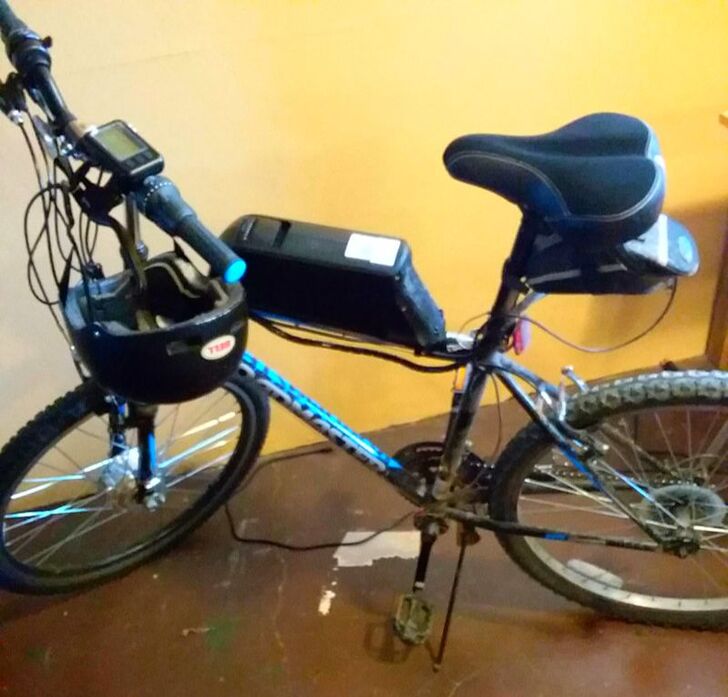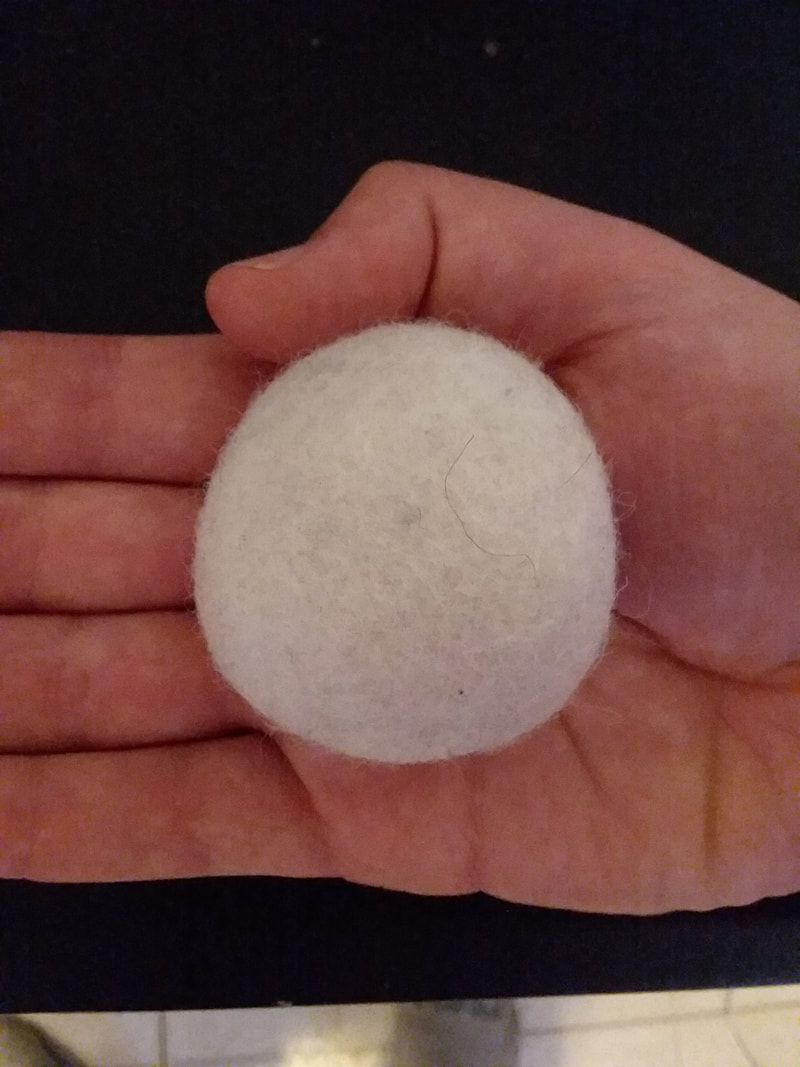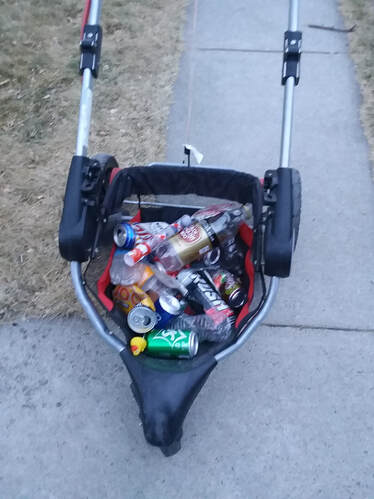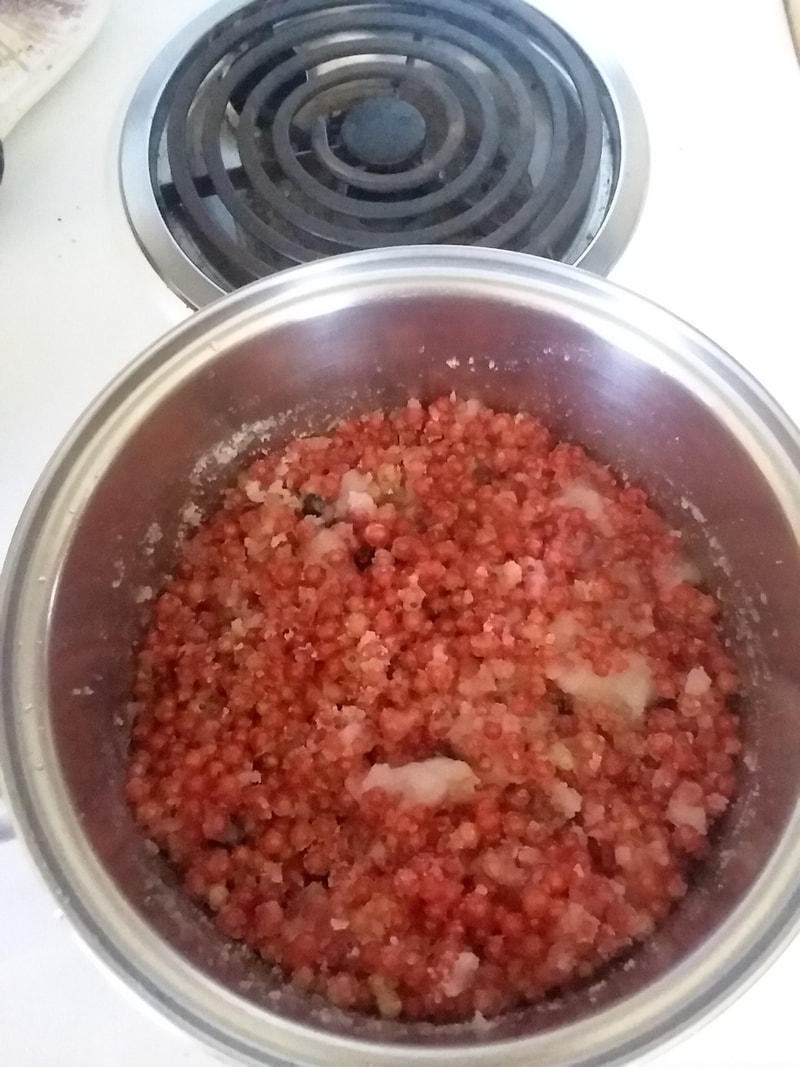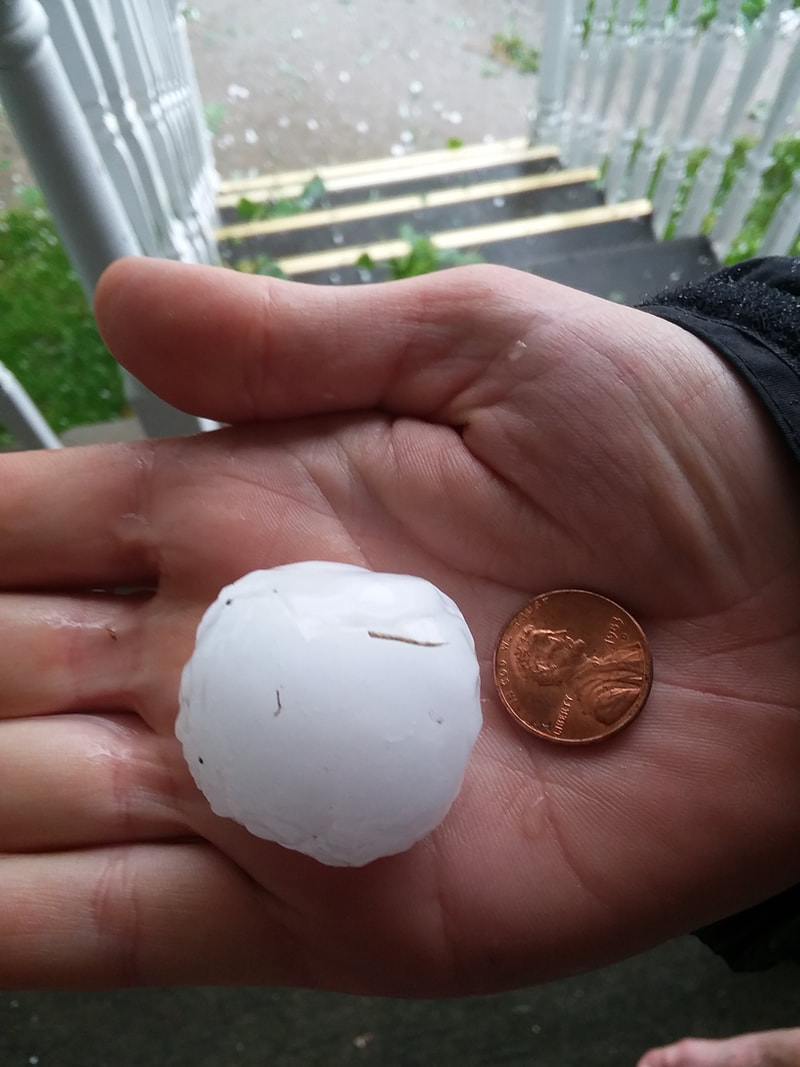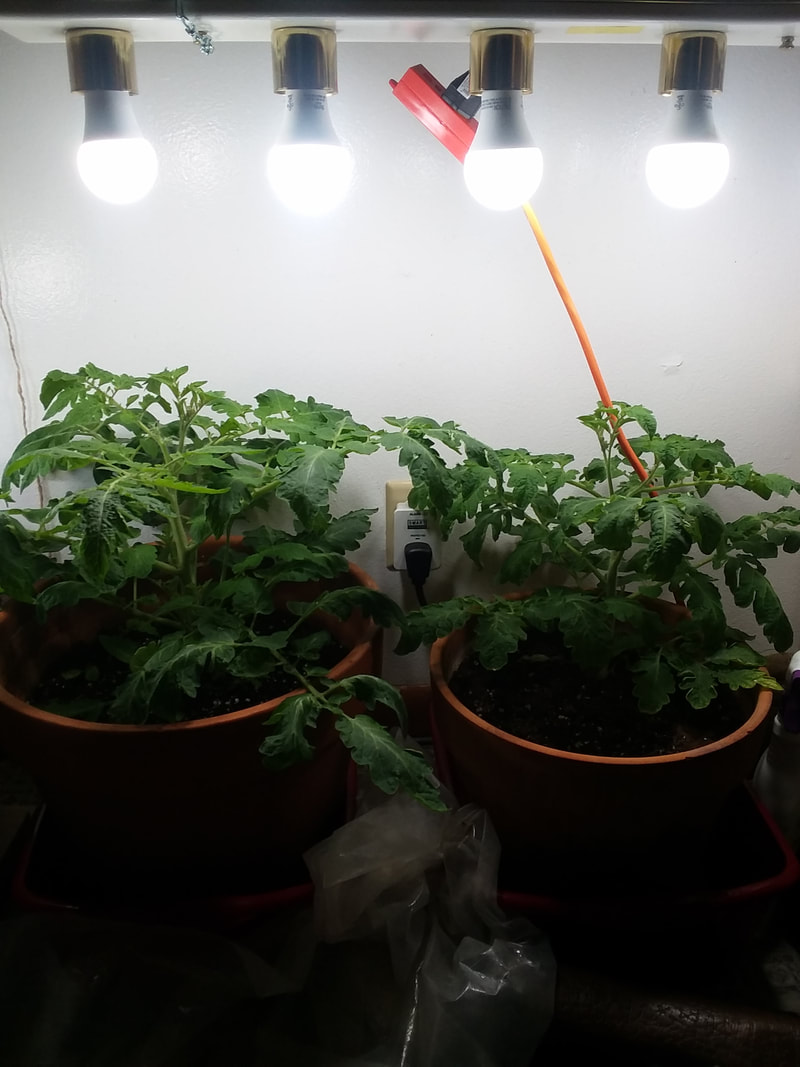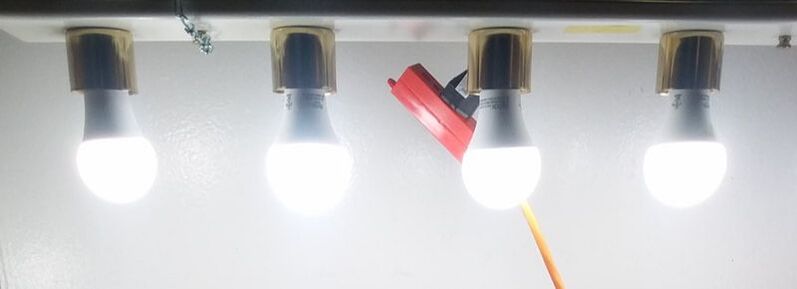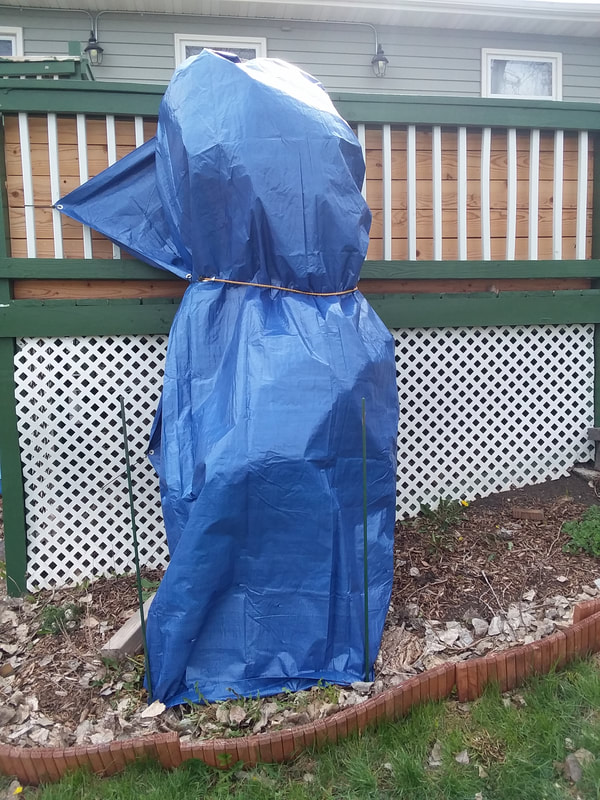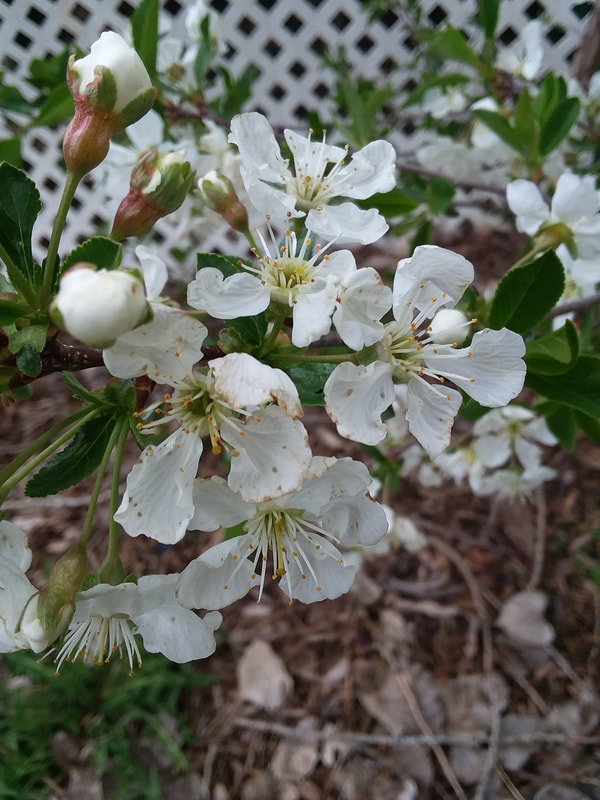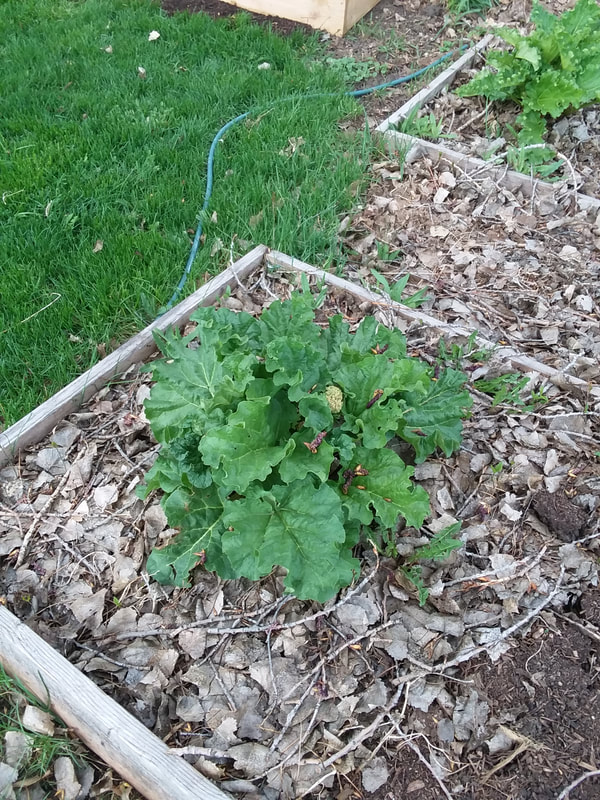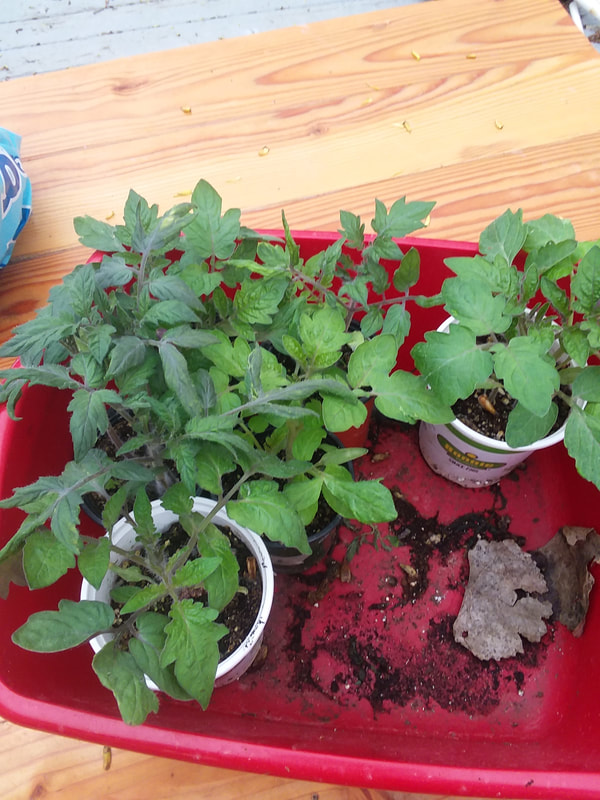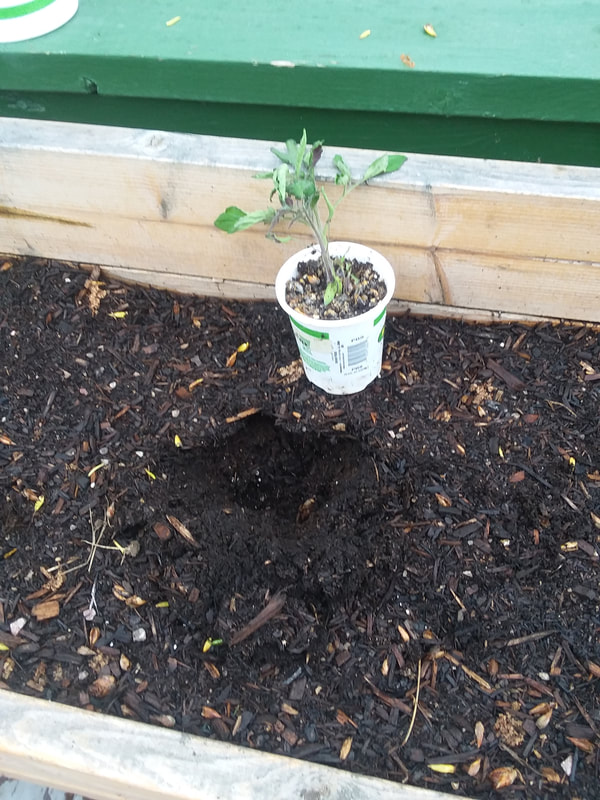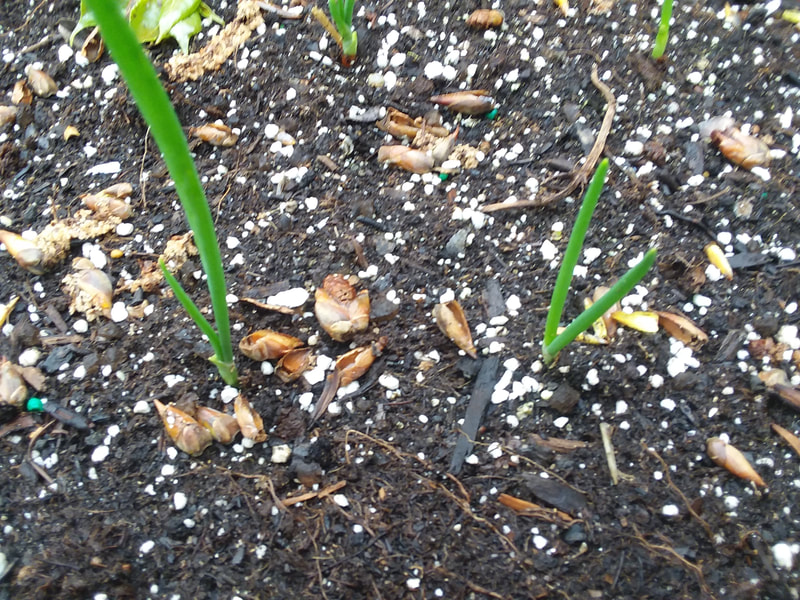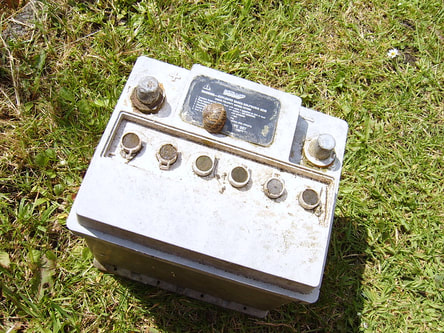 The big hype in energy storage right now is all about the Lithium Ion battery and that hype for the most part is warranted. Lithium ion batteries and similar types of battery energy storage are going to be critical going forward for use in transportation and micro grid energy storage. But batteries of any sort are not the only name in the game when it comes to energy storage. This is especially true when you start to consider the type of storage, we would need to manage energy on the scale of a country. While it is conceivable that you could use large scale battery farms to stabilize power grids it may not be the best solution depending on many local factors. What I am going to do today is to outline a few different technologies that range from the well tested and already being implemented to a bit more strange and experimental.
1 Comment
You have probably heard that old story before where if you stick a frog in a boiling pot of water it will try to get out. If you stick a frog in a pleasantly cool pot of water and then turn on the heat the frog will let itself get cooked because it doesn't realize what's going on. While you might quibble with some of the details of the story the basic premise I feel rings true.
We humans are animals just like that frog and we are hardwired to pay attention to sudden shocking changes in our surroundings and not things that change slowly or gradually. But eventually even things that move slowly will get our attention once they become impossible to ignore. I think as a society we are finally reaching the point where we can no longer ignore the fact that the water is getting a bit toasty and it is time to get out of the pot. With the recent release of the Intergovernmental panel on Climate Change that reviewed much of the latest research in climate science the summary is clear Climate Change is Real and We Caused It. Gone is the wishy washy language of the previous reports with the new report saying things like, “Observed increases in well-mixed greenhouse gas (GHG) concentrations since around 1750 are unequivocally caused by human activities. Since 2011 (measurements reported in AR5), concentrations have continued to increase in the atmosphere, reaching annual averages of 410 ppm for carbon dioxide (CO2)” “Human influence is very likely the main driver of the global retreat of glaciers since the 1990s and the decrease in Arctic sea ice area between 1979–1988 and 2010–2019 (about 40% in September and about 10% in March). There has been no significant trend in Antarctic sea ice area from 1979 to 2020 due to regionally opposing trends and large internal variability. Human influence very likely contributed to the decrease in Northern Hemisphere spring snow cover since 1950. It is very likely that human influence has contributed to the observed surface melting of the Greenland Ice Sheet” “Changes in the land biosphere since 1970 are consistent with global warming: climate zones have shifted poleward in both hemispheres, and the growing season has on average lengthened by up to two days per decade since the 1950s in the Northern Hemisphere extratropics (high confidence)” When you start seeing language like,
That's science speak, we are pretty sure that what we are saying is true. There is no such thing as 100% certain when you talk to a scientist because they know that you can never be 100% certain about things. But you can be sure they are pretty damn sure when they start using language like you see in the latest report. It's nice to see such unambiguous language finally coming out from this panel that has been doing these reports for 30 years and they have essentially been screaming into the void that is the governments of the world. No government has given serious credence to these reports and really taken the forecast and outlook presented in the reports to heart. There are places like Germany that have been doing some good for decades in the solar industry by providing real support to both individuals and industries in installing and paying for solar but examples like that are few and far between. For the most part we as a species have twiddled our thumbs, had inane arguments about whether climate change was real or not and have lost decades of time that could have really been useful. This report clearly shows that our time is up and we need to make changes now that reduce our impact on the planet. The changes to the climate are obvious to anyone who is willing to open their eyes and accept what they are seeing. The problem is big and so are the solutions We are now facing one of those history-making problems that will either create another Greatest Generation or end with us being scorned by our descendants assuming they have the time or knowledge to scorn us. The problems we face cannot be solved by just your or me putting solar panels on our roofs or by driving less. The time for that approach is gone…. We now need whole systemic change from the bottom up, top down and even side to side. We need to get our governments to pass laws that will push us and the companies of the world toward a sustainable future. This is a collective need and it will require collective action from all of us to do what we need to do to keep this great experiment we call civilization going on. We need to do things like,
And the list could go on and on and on….. The time is now so let's get going shall we. Among retirement planning circles there has been this idea of how you are supposed to fund your retirement called the 3 legged stool. This stool is a representation of your post retirement life and the funding sources that support it.
In financial planning circles the seat of the stool is supported by,
The Journey So Far
Wow, it is hard to believe that I am going on two years since I decided to dive full time into bike commuting to work. I didn't realize at the time when I decided to try this just how much I would love it. I can barely remember what it was like to drive to work every day. What I do remember about it is that I didn't like it. Check out this great article from Treehugger on solar panel recycling.
https://www.treehugger.com/solar-panel-recycling-5181394 When it comes to living a greener life the obstacles in your way can be many. They can vary in size from your commute to work in another town everyday to producing enough waste to take the trash out 3 times a week.
Now some obstacles like the commute can be very challenging to change due to circumstances outside your control but other problems like how much trash you produce is something that can be tackled. How much trash you produce in your home is a combination of the following factors,
Check out this article for a take on the path we should be going down to get to a greener and sustainable future.
https://globalecoguy.org/occams-razor-for-the-planet-b3a720cc961c 
One topic that comes up a lot in parenting/FIRE circles is this all-consuming idea that we should start socking away money in a college fund so that the little one can go to school debt-free. While on the face of it this impulse is admirable why wouldn’t you want your kid to have a debt-free college experience? If they graduate without a load of debt on their backs they will be free to just leap off into the working world and start raking in the cash from the great job they got because of their degree.
That is one possible future but what's equally as likely is that instead of getting a more realistic degree like mechanical engineering they instead followed an interest in the poetry of 14th and 15th Spain. While that grounding in poetry makes them a great storyteller and engaging conversationalist it's probably a bit harder to find gainful employment with that degree. What is silicone?
Is a compound that uses silica aka sand as the base material for forming a variety of resin, greases, and rubber like compounds. These materials are useful because they are very chemically stable and heat/cold resistant. They are generally considered safe to use in a wide variety of products including food storage or preparation applications which is the main focus of this post. What I like about the bags One of the main things I like about the bags is their durability. I have used silicone food bags for years and they have essentially replaced all my single-use plastic bag use. They are easy to wash both by hand and in the dishwasher. The ones I sell also come with a slide on clip that holds the bag shut in an air tight seal. They are useful for storing fresh and dried foodstuffs at any common kitchen temperature from the freezer to the cooktop. These bags also come with a gusseted bottom which allows them to stand on their own when filling them. This particular feature does work better once you get something in them but with a little practice, you can get them to stand up on their own. They also make great travel containers for bringing your own lunch or hauling other loose supplies around with you. What I don’t like about the bag Probably the biggest complaint I have about them is the time they can take to dry after you wash them. They have a tendency to close themselves up when wet which traps moisture in the bag. This can be easily fixed by gently turning them inside out to dry or by placing them on a dish drying rack that keeps them open. Also, even the biggest bag I sell is still a bit smaller than the standard gallon bag. This can make it a bit deceiving on what will actually fit if you are comparing it to a standard gallon bag. Final Thoughts Overall I love my silicone food bags but they do come with some controversy. While food-grade silicone is considered chemically stable and therefore safe to use around food, the body of research confirming that is a bit on the light side. There have been some studies that have shown chemical leaching into their surroundings when exposed to some oils or high heat. However, all the research I could find only showed that when the silicone was exposed to oils for long periods (72 hours) or heat above 428 degrees. The question I raise in the face of that is how often are you the common person doing that to your silicone bags. I would guess not often…. So, in general, I feel comfortable using them for the storage of dry goods, food in the fridge and freezer. While technically I could even cook in them it’s when you apply heat that also sorts of strange things begin to happen so I generally avoid it and stick with glass and cast iron for cooking and baking. So if these bags interest you check them out here. Sources: https://sehsc.americanchemistry.com/sehsc/What-Are-Silicones/ https://www.britannica.com/topic/inorganic-polymers-1462212#ref1000410 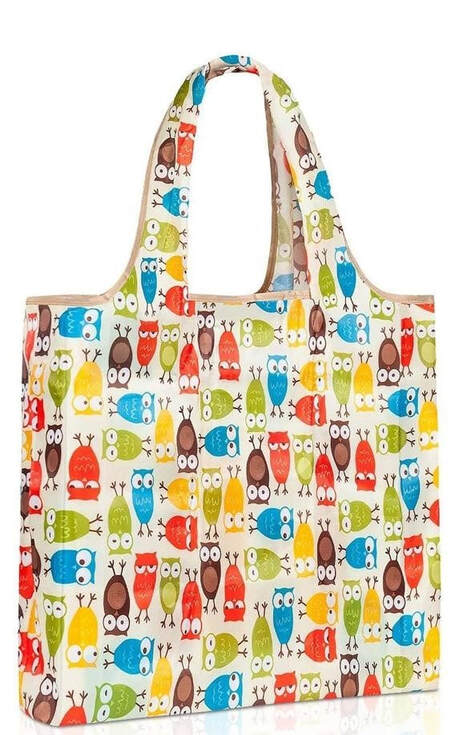 Today I want to talk about reusable shopping bags and why you should consider using them for all your shopping and other out on the town needs. If you search the great wide world of the internet you will find a lot of conflicting research done about the damage of single use plastic bags in the environment. Some people will say with compelling facts and figures that plastic bags are less harmful than paper bags or other reusable products. Others will say the exact opposite and use similar or even the same facts and figures to prove their point. I say this because I honestly don’t know which version of the argument has more merit. What I do know or at least have some degree of confidence in is the following,
Where does this leave me? What I know leaves me with the personal opinion that disposable plastic bags despite what some people say are worse for the environment than reusable or compostable bags. The facts that really sway me to the reusable bag side of the argument is the time of use and time that the bag sticks around for after its useful like is done. If you only use something for 12 minutes and then throw it in the garbage where it sits for the next 500 years that to me is much more damning than the reusable alternative. The Bag Now that I have got my philosophizing out of the way I can get to the matter at hand and tell you more about the bags I sell in The Sustainable Like Shop. Specifications
What I like about the bags There are a couple of things about the bag that I really like. One is its overall size and construction style. It’s big enough to hold a lot of things be they groceries, books, or supplies for a day at the beach. The handles are also integrated with the rest of the bag which eliminates one of the common points of failure on many reusable cloth bags. It also has a gusseted bottom which allows for easier filling and can let it stand up when full. This bag is also very light and can collapse down very small which makes for easier storage at home and in the pocket when heading to the store What I don’t like about the bags Probably the biggest thing I don’t like about the bags is that they are made of a synthetic fiber and not natural fiber While this is a durable and long-lasting fiber it is not ultimately very compostable when it’s useful like is done. However, since I will get lots of use out of this bag it is still better than disposable bags since it will get many uses by the end of its life. Final Thoughts The main takeaway I have for you on this subject is that you should always use a reusable bag whenever it is possible. By almost any reasonable assessment something you use for a long time is always better for the planet than something you only use for a little bit. Using a cloth bag like the ones I sell here are an important and easy step to living a more sustainable like into the future. Sources: https://www.epa.gov/sites/production/files/2020-11/documents/2018_ff_fact_sheet.pdf 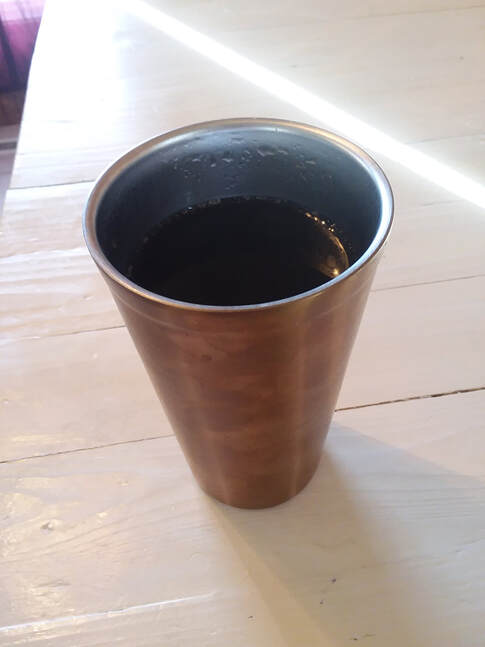 Today I will be offering my thoughts on the steel cups that I have for sale in The Sustainable Life Shop. The one thing I will say right off the bat is these are not your usual stainless steel cups. Far starters they are more expensive per cup than many others you can find out there but that extra cost means you are getting a lot more cup for your money. Specifications
What I like about the cups I really like my rose gold cup… It has become the defacto cup that I use for pretty much anything. It is suitable for holding both hot and cold liquids and does so while still remaining comfortable in the hand. The drinking edge is also nice and smooth with no sharp edges or that awkward rolled steel you see on many stainless steel cups that can hold onto water after you have washed them. The weight of it is also very nice it feels like a real drinking glass in your hand versus what a plastic or even other stainless steel cups feels like in your hand. It is also incredibly easy to hand wash for those of us with large hands and is dishwasher safe to boot. The last thing I like about it is its durability during life and the fact it can be 100% percent recycled over and over. You can’t do that even with high grade plastic cups. When they go through the recycling process it’s more like a downcycling process that leaves the plastic worse of every time it is recycled. What I don’t like about the cups I think the only real complaint I have about the cup is that multiples of them don’t stack as tightly as I would like. Now it could be because I am a hoarder of useful things and I don’t like to throw anything away that might be useful but I don’t have a lot of room on the cup shelf. So the fact that it is easier to store them separate from one another is kinda irritating. I know it’s a small complaint but I had to give you something right. If you would like to buy one here is the link 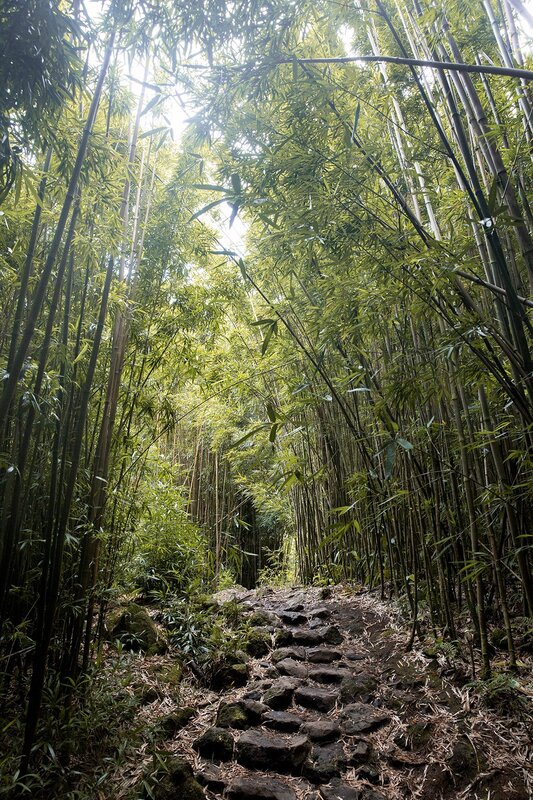
So as part of my continuing series of blog posts on the products in The Sustainable Life Shop today I will be talking about the bamboo toothbrushes I have for sale in the store. The toothbrushes I have for sale consist of two parts: the bamboo handle and the nylon bristles. The handle portion is made of 100% bamboo which is a fast-growing member of the grass family, not wood as many people assume.
Bamboo is a widely growing plant that can be found across the world growing in tropical regions and some temperate mountain zones. It is a widely used material and can be found commonly in,
It is also one of the fastest growing land plants in the world and some species have been documented to grow as fast as 1 foot per day. When managed properly bamboo forests are a very sustainable source of raw materials to be used in many aspects of modern life. Now it's time to talk about the bamboo toothbrushes that I have for sale in The Sustainable Life Shop. Specifications:
What I like about them The thing I like the most about these brushes of course is that they are mostly constructed of a 100% renewable and compostable material like bamboo. Typically toothbrushes these days are made entirely of plastic that can only be thrown away when the head wears out. These brushes give you the options to separate the head from the handle and compost what you can. I also like how it feels in my hand when I am using the brush. The handle is actually on the small side being both thin and narrow but even with my large hands it is comfortable to hold and to use when I am brushing my teeth. The head is also fairly small consisting almost entirely of bristles for its bulk. It fits easily in the tight spots when I am brushing and doesn’t jab me in the gums or the back of the mouth. What I don’t like about them There are two things that slightly detract from these brushes. One being the fact that the bristles are made of nylon which is a non compostable synthetic fiber. You can find toothbrushes that have either natural hair bristles or bristles made from natural oils like these but they are usually fairly expensive per brush. I hope to one day be offering a 100% compostable toothbrush but sourcing them can be a challenge. The second is the feel of the handle on the lips as you brush. To someone that has used plastic toothbrushes their entire life the bamboo can feel rough when it gets wet from the brushing. This is true of all wood or wood like products and it's not a bad thing it's just a weird feeling in the mouth. Final Thoughts Overall I have to say these toothbrushes will do their job and they do it well for being relatively cheap manual toothbrushes. While I don’t like the fact they have nylon bristles they do contain far less plastic than other toothbrushes and produce very little waste at the end of their useful lives. If you would like to try them out here is the link Other all natural toothbrushes
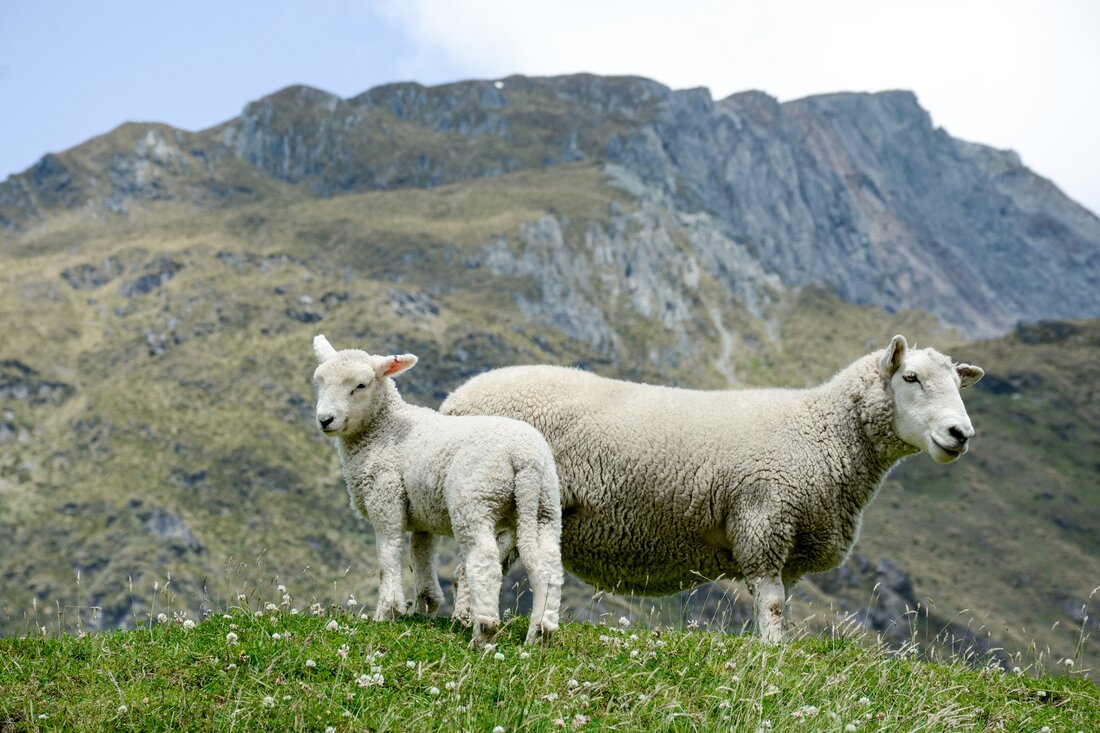 So if you haven’t guessed by now this particular blog post is about wool more specifically the wool dryer balls I have for sale in my store. So just in case, you didn’t already know most wool comes from these guys Photo by Sabrina Wishak from Burst Cute little things aren’t they at least from a distance where you don’t have to smell them. Sheep have been with us for a long time and at first, we didn’t even use them for their wool. Archaeological findings tell us that they were originally kept for their meat, milks, and skins with the wool still attached I’m sure. However, in the relative blink of an eye, just a couple thousand years or so humans did start to breed them solely for their wool. We had discovered that wool just by itself was an incredibly useful material especially as humans began to inhabit colder and colder climates. The uses of wool are far-reaching even in modern society some examples of wool today would include,
Which of course brings us the main attraction of today’s post which is the wool dryer balls we sell at The Sustainable Life Shop. Now if you must use a dryer to dry your clothes or you just want some softness beat back into your towels then you need some wool dryer balls. These little wool balls help out in several ways in making sure your clothes, towels and sheets come out of the dryer better than they went in. Softening clothes There is nothing quite like physical action to literally beat the stiffness out of jeans, towels, and other commonly stiff clothing items. Unlike dryer sheets which use chemicals to soften your clothes the 100% wool fragrance-free balls do it by pummeling your clothes into submission as they go around the dryer drum. They can do this again and again without having to be replaced, unlike those single use dryer sheets. Dry Faster Another thing that these little wonders are good for is separating your clothes out so they dry faster. You have probably noticed that some things like to twist themselves into knots in the dryer leaving you with damp spots and some serious untangling to do. Dryer balls can mitigate this somewhat by creating space. Since your clothes are drying sooner you are also using less electricity/propane which is a win for your clothes the environment and for your wallet. Biodegradable While not necessarily a feature that helps your clothes it does soothe my conscious to know that at the end of their useful life I can just chuck them into my compost bin and add them to the garden. What I don’t like about wool dryer balls. There is really only one thing I don’t like about these fellas and that is they sometimes get caught up in sheets or other large bits of laundry and they come with when you empty the dryer. This is followed quite often by them flying out at some inopportune time and try to make their escape. While this feature is annoying to me it is beloved by the family cat who thinks chasing them down and playing with them is the best thing ever. So at least the cat continues to find amusement in my suffering. In conclusion I like them, The cat likes them, And they are renewable product that is 100% compostable at the end of its life what’s not to like. If you agree head on over to the product page and check them out. Ok so the title is a bit misleading on two fronts...
I picked up all that over the course of two walks I went on with the child seeking some outside time for myself and the dog as well. I would also like to emphasize that I didn’t even go out of my way to pick all that up, it was either on the sidewalk or right next to it as I walked. I tell you this so I can make a confession I don’t normally pick up trash and recycling I find on my walks. I know shocking right…. How can someone who built and writes on a website called the Green Living Library not make it a habit of picking up loose trash wherever they see it? Since I am being entirely honest, there are two reasons why this is not a habit for me.
Legal vs Moral From a legal perspective, unless that trash ends up in the immediate vicinity of my house it’s not my problem. It has to be on my property before I legally have to give a crap about it. This seems to be true of most cities, if it’s not in the street it’s the problem of the property owner. So while I am not legally obligated to pick up trash from the sidewalk in front of other people’s homes I am starting to come around to the fact that maybe I am morally obligated to pick it up. I share that sidewalk, that street, the neighborhood, even the whole town with other people and it seems to me that I have a responsibility towards that community to help take care of the environment it exists in. Public Responsibility vs Private Responsibility The question I am beginning to wrestle with more and more as I grow older is where does public responsibility end and where does private responsibility end? At what point is it my problem and what point it is the public’s problem? Up until recently for the most part I considered everything that was past my property line and didn’t affect my life as not my problem.
Now on the face of it, things like I have listed above, are someone else’s problem. But if everyone takes the it’s someone else’s problem approach to life then a lot of things that need doing don’t get done. I’ve come to the conclusion that the answer to my question about where public and private responsibility end is that, They don’t end…. they are one and the same. There is no private responsibility or public responsibility you don’t get to pick and choose where you are responsible for something and where you are not. If you are a living breathing person then like the rest of us are responsible for every second of your life and every action taken or not taken during that life. So yes maybe someone else is why there is a broken beer bottle on the sidewalk going to a school but if you walk by it without cleaning it up then you are just as responsible for that beer bottle. I know it kinda sucks right….. If you look at the world through the framework of universal responsibility where if you have the power to make it better then you are responsible for making it better then suddenly you have a lot more problems. But that’s ok because along with those problems you also get the power to solve them. Now, this doesn’t mean I expect you to run out and solve world hunger and fight crime, some things are better left to those better suited to solve them. But the next time you see some trash that needs picking up or an elderly neighbors sidewalk that needs shoveling maybe you make that problem yours and in a small way make the world a better place. Whether we want to admit it or not we are all responsible in some small way for how the world is now and that means we are also responsible for how the world will look in the future. I hope for the sake of my child that by the time they are my age they are living in a much cleaner, greener, sustainable world that they won’t fear bringing a kid into like I do. I don’t know what the future holds but I know that one thing I can do is teach my kid to pick up garbage, recycle whatever they can, and live the cleanest, greenest, and most sustainable life that they can. Here is a cross post from my new online store...
So here it is the very first post about my new venture… The Sustainable Life Shop A store with one goal to provide a place where you can find products that make it easier to live a more sustainable, eco-conscious, greener life. It is a place that accepts the fact that we live in the real world and in the real world you need things to be able to live your life. What The Sustainable Life Shop does not accept is that those things need to be disposable or designed to have a short lifespan. To that end, I here at The Sustainable Life Shop have created a curated list of products that I use in my life to make my existence more sustainable and more eco friendly. As I get time each product will have an associated post here in the blog section featuring what I think of the product, how I use it, and what disposable products it replaces in my life My goal is not to provide a sugar-coated message about how each product is great but to go into it features both good and bad and let you decide if you want it or not. In order to be sold in The Sustainable Life Shop, an item must meet two of my three standards for an eco-friendly product,
So here we are again it's the holiday season here in the USA and for a lot of the world. You start it off with the gluttonous feast of Thanksgiving, hit the peak of consumerism and waste for the year by Christmas and for many people the season is ended by staying up to late and getting hammered at some party to celebrate the beginning of a new year.
At least in a non Covid-19 year that is........
So as I alluded to in a previous post my family was going to be expanding a bit in August. Well it is now the end of September and that TERRIFYING/WONDERFUL thing has happened and my family has now grown by one more. I'm not going to tell you their name or post a picture of their butt in a cloth diaper so don’t worry about that. I don’t believe in putting pictures of personal things or people out there unless I have their explicit permission. Which is of course is hard to get from someone that is only a month old.
But since little one has been in cloth diapers now for a few weeks I wanted to share some early thoughts I have on the difficulty of cloth diapers versus disposable. Just so everyone is clear when I am referring to cloth diapers I am referring to a type called a pocket diaper. Where you have a separate liner and a waterproof shell with a built in pocket. You can see what I mean in the product link below 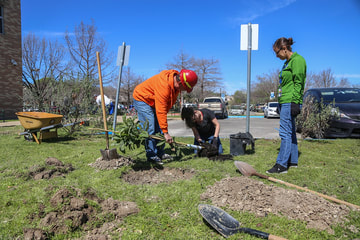 What could be simpler right planting a tree is as simple as digging a hole and plopping it in the ground. Well as someone who is out there both professionally and personally on the front lines of tree planting, I can tell you that you are mistaken. Planting a tree can be that simple but, in many cases, it is way more complicated than you think. Because when you are planting a tree you aren’t just sticking a tree in the ground you are adding a long-term fixture in the landscape that will have impacts and repercussions long after you are gone from the scene. I will be approaching this issue from the perspective of planting a tree in an urban or community setting. That is because planting a tree in town comes with a set of issues that are not a problem in a more rural setting so I will focus on those issues here.
So I have to make a confession or perhaps an announcement to make to the whole wide world. I am about to become a parent for the first time. Sometime during the month of August 2020, I along with my partner will be welcoming a new life into this world. Unless of course, the new addition to our family decides to be fashionably late and arrive in September.
Needless to say with everything going on this has not been my idea of a good year to have a baby. Aside from the obvious pandemic, it has been a personally tough year in other respects getting ready for the new baby and all the changes it will be bringing into my life. The biggest concern I have had on my mind is can I raise a child without compromising my green living values. Children can be inherently wasteful mostly in ways outside their control or even comprehension. It really falls on the parents to make the decision that is best for their child and in my case the values I live by. But when you look out into society and the products and expectations that come with raising a child it is clear that disposable diapers, cleaning products, fast fashion, and cheap throwaway toys rule when it comes to raising children. I have received so much pushback on our plans to use cloth diapers, washable wipes, and to put our kid in all used clothing. It has mainly taken the form of knowing looks and the phrases, “That’s gross why would want to clean dirty diapers” “Ohh that's too hard you won’t keep up with it” After many years of waiting and bad crops with my currant bushes I managed to get enough off of them to bother making something from them. I plant these bushes 4 years ago and in every year since I have been fighting the birds, the weather and just bad timing trying to get more than a handful of currants. This year I finally did it. I actually have to thank the fact that I am working from home for this. It has really allowed me to monitor my various fruiting shrubs much better than I have in years past. Let me tell I am just a bit surprised by this since the weather this year has been atrocious for my garden. For most of the spring it hovered at or below 32 degrees and it rain/sleeted. Then flipping a complete 180 it jumped up to 90+ degrees for weeks on end with no rain which has turned portions of my garden to something like concrete. and the hail don't even get me started on the hail. '
But I and my garden persevered and push through all the bad weather to finally produce something I can enjoy eating. As I right this the the currants and the sugar is cooking together on the stove top and I really hope it turns out. Being able to produce my own food is part of how I am trying to live a greener life. The more I can grow at my house the less I have to buy which is better for the environment as well as being better for my wallet. For this particular foray in jam making I am using a simple recipe I found at the The Spruce Eats. https://www.thespruceeats.com/red-currant-jam-recipe-1327858 What I liked about this recipe is that it also gives the amounts in grams and ml which makes it much easier to adjust to the amount of currants I have, and here at the Green Living Library stuff that is simple to use and change is gold to us. That's all for now There is a disturbing trend out there in the world right now that that needs to be addressed. The return of disposable plastics If you look back over the last decade you can see a growing momentum of city, counties, and whole nations trying to limit the use of disposable plastic bags, straws cups, and other single use items. While the effectiveness of these bans can perhaps be questioned on how much plastic they save or trash they prevent. The important bit is what the plastic bans represent in the sentiments and ideas taking hold out in the world. We as a global society were finally starting to see past the short-term gain and look at the long term picture. But then something happened, something that took our gaze from the future and yanked us roughly right back to the present. I am of course talking about Covid-19. The pandemic has taken us from the path of reusable bags and bring your own coffee mugs right back to single use plastic. The line we hear from everywhere it seems is that single use plastic is more sanitary and safer to use. But where is the data that backs up that theory? It’s not there in fact the data that has been gathered about how long the virus sticks around on various materials has shown that it can live longer on plastics, stainless steel, and other hard impervious materials and it has a much shorter half-life in things like cardboard most likely fabrics. So where is this assumption that plastic is safer and more sanitary coming from? Fear and Propaganda. We are all afraid of this thing and what it could do to us and our families and fear can make us lose all reason and drive irrational thinking and poor long-term choices. It is perfectly understandable that people are afraid, hell I am more than a little paranoid myself about a few things. But the fear that using items more than once makes them unclean and unsafe is simply not true. Items can be cleaned, they can be sanitized and they are as clean if not cleaner than you. So if you believe you are doing a good job with keeping yourself safe than your cloth bags and coffee tumblers are no more dangerous than you. The propaganda is coming from an industry that was under attack from falling demand changing times as people around the world demanded products that were better for them and the planet we live on. They are trotting out the same message they have for the last half century that life is always better with plastic. In many ways they are right, the modern age would not be possible without plastic and the many advances it enabled us to make. But plastic in its many forms is also a major polluter both during its manufacture and after it has been used. For a long time, we were willing to accept that pollution for all the benefits it gave us but lately, we have begun to wake up to the problems. So fear and propaganda aside let's look at the idea that single use plastic bags are safer than cloth bags for use in the grocery store. First of all, people are under the mistaken impression that grocery store plastic bags are sterile and clean.
Think about that for a second…. They are manufactured in a factory, packed and shipped all over the place, and then finally unboxed and handled by many people and placed in a rack at the checkout. They then sit there and get exposed to the grocery store environment with all its people and their hands and breathing until they are finally used up. If that sounds clean and sterile to you need to look in a dictionary. Sterile- free from living organisms and especially pathogenic microorganisms If you compare that to cloth reusable bags the chain of people touching them and how long they are in the grocery store is much less intimidating. Assuming you bag your own food no one but you touched your bag which cuts down on contact transmission. If you bring your own bags you also limit the time they are exposed to the environment in the store which again reduces contact time. Finally, unlike plastic bags your cloth bag can be washed, bleach or otherwise sanitized to your heart's content. Try doing that with a plastic bag at the store.... The same principle can apply to any situation we were once again being coerced into using disposable plastic. When you really think about it is much safer for you to use stuff that is only exposed to you and your immediate environment, not something anyone can use at the store. Thinking about the Future I know the times are scary and stressful but we cannot let the immediate crisis take our eye off the ball that is global climate change. What can happen if we don’t start making drastic changes to the way humanity operates will make the pandemic look like a pothole on a road heading for a cliff. You shouldn't ignore the pothole but don't let it distract you from that pesky cliff coming up real fast. So the moral of this story is don’t let fear control your actions, question all the propaganda you hear about how single use is better and use your brain to make good decisions Sources: https://www.nejm.org/doi/full/10.1056/NEJMc2004973
Growing a garden in an apartment or other small space is the ultimate test of plant growing ingenuity. When most people think of growing something indoors they think they need a nice sunny window to put the plants in. While a bright sunny window is nice to have it is by no means the only way to grow a garden in an apartment anymore.
With the advent of low cost, long lasting LEDs you can grow a garden just about anywhere without it costing a substantial amount of money. Just as an example you can see in a picture below where I grew cherry tomatoes and salad greens all winter long in an otherwise very dark room. This room hardly got any daylight into it and certainly none on the wall where I put the pots.
If you want to grow a garden inside then what you want to do is maximize efficiency in the following ways,
Lights When it comes to growing food inside I find it is best to start with your light setup. You want something that is adjustable in height so it can be raised or lowered according to plant height. It is important to keep lights just above the plant you are growing because this will get the most light to impact the plant leaves. Even with today's LEDs you still need to be close to the plant to offset the fact that light bulbs are not the Sun. Light systems can be purchased commercially like this one or you can make your own from DIY parts. The commercial bought systems are not cheap but they come with all the bells and whistles and come with bulbs specifically tuned to produce light in the wavelengths plants need for photosynthesis. A DIY system is not for the faint of heart and I do not recommend them unless you are comfortable with doing your own wiring. That wiring can be as complicated as actually wiring up an entirely new light system or just modifying an existing one. The one seen in this photo below was my approach since I could get the parts for a very low cost. It consists of an old bathroom vanity light wired up to be plugged into a wall receptacle instead of being hardwired.
Just to reiterate if you are not confident in your ability to do electrical wiring or you live in a location that doesn't allow it,
DON'T DO THIS and I am not liable if you do and something bad happens. If you assemble your own grow lights you can either do something like I did you can use what I call a shop light setup. Doing it this way can be nice because you can get the same LED technology in these and they are built in a way that puts light where you want it. You can also get these with a receptacle plug pre-installed so that means no wiring for you which can be a stress reliever. When you buy the bulbs make sure to get ones that are at least 100 watts and in the daylight part of the light spectrum. These bulbs will put out a bright white light instead of the softer more yellow light usually found in most home lamps. An example of what I mean for the standard A21 bulb is below.
Growing Medium
The choice of what to grow your plants in can have a dramatic effect on the cost of the setup and the ongoing effort to make it work. In terms of expense the bottom of the shelf is just regular potting soil you would use in a pot. Most potting soils are soil less and are instead a mixture of organic and inorganic parts. Some of the most common potting soils are made from peat moss, vermiculite, and perlite which are all great at holding water and nutrients for the plant to use. The next step up is to use a hydroponic system that flushes a nutrient rich water over plant roots periodically. This system requires something for roots to anchor on like, clay pebble, coco chips, pine shavings or just plan old river rock. These systems are nice because they tend to be lightweight unless you use rock and you get very good production when compared to a potting soil setup. They do come with more expense because you have to supply extra nutrients, buy pumps and timers to regulate water flow and they use more electricity than a potting soil system. The step up from that is aeroponics which is basically hydroponics that does away with the growing medium altogether. It used fine misters to spray plant roots with a fine nutrient rich mist. It can work great when it works but this system is highly dependent on nothing going wrong. A power loss or a water supply failure causes the roots to dry out in minutes and you can lose a crop just as fast. So aeroponics is not for the faint of heart or for people that like to set it and forget it. To put these systems in terms of ease of use and likelihood of failure I would put them in the same order as expense. The addition of a water/nutrient holding medium in the first two systems reduces the chances of total failure. You have more time to catch and fix whatever is going wrong in the system. What I would do If I was a new indoor gardener I would set up the following system. I would use a soilless potting soil with a built in catch basin to hold extra water. I would place them under pre-purchased shop lights because of the ease of setup and the ability to raise and lower the lights easily. If I had the room I would multiple shelves of produce from floor to ceiling with 3 feet between each shelf. This should give enough room for most plants to grow while providing clearance for the lights. The plants I selected would most likely be any or all of the following,
I picked them because they continually produce and they don't need any pollination to produce. Hopefully, this gives you some ideas or inspiration to start growing your own indoor garden this winter so you can enjoy fresh produce all winter long.
Having a garden is not just for those who have large plots of land that they can till up and plant seeds in. Even someone with no more space than a deck can have a bountiful container garden that can produce just as much and in some cases more than a garden planted in plain old dirt. This is possible because you can tailor the soil medium for maximum growth and place the pots where they can get the perfect amount of heat and sunlight. There are a few things to consider when establishing a container garden.

Containers
There are two basic categories of containers you can use for planting a garden on a deck. Pots Planter boxes. I seperate them out because pots come premade in many different styles, materials, sizes and can be moved once full. While planter boxes are typically built on site and are too large to easily move once they are full of soil. Pots You can get pots these days in many sizes and materials. They can range in price from cheap plastic to more expensive terracotta and ceramic. In my deck garden I mostly use terracotta pots for the following reasons,
Plastic pots can have some benefits as well as being cheaper than terracotta in most cases and are better at holding moisture for people who water infrequently. Pot Size When it comes to container gardening for most plants bigger is always better. This is because the more soil or other growing medium you provide the better the plant will grow. I dont grow anything in a pot smaller than 12 inches now and most of my pots are actually bigger than that. Smaller pots can be quite successful for herbs but keep in mind that if you vary your pot size too much it can play hell with a watering timetable. Small pots on hot days in the sun can need water multiple times a day while larger pots suffice with one watering a day. If you are starting from scratch I would try to pick a once size pot to use so that you can better predict what you watering needs will be. If you want to vary from that once size go bigger since that will in most cases need less watering than the smaller one. 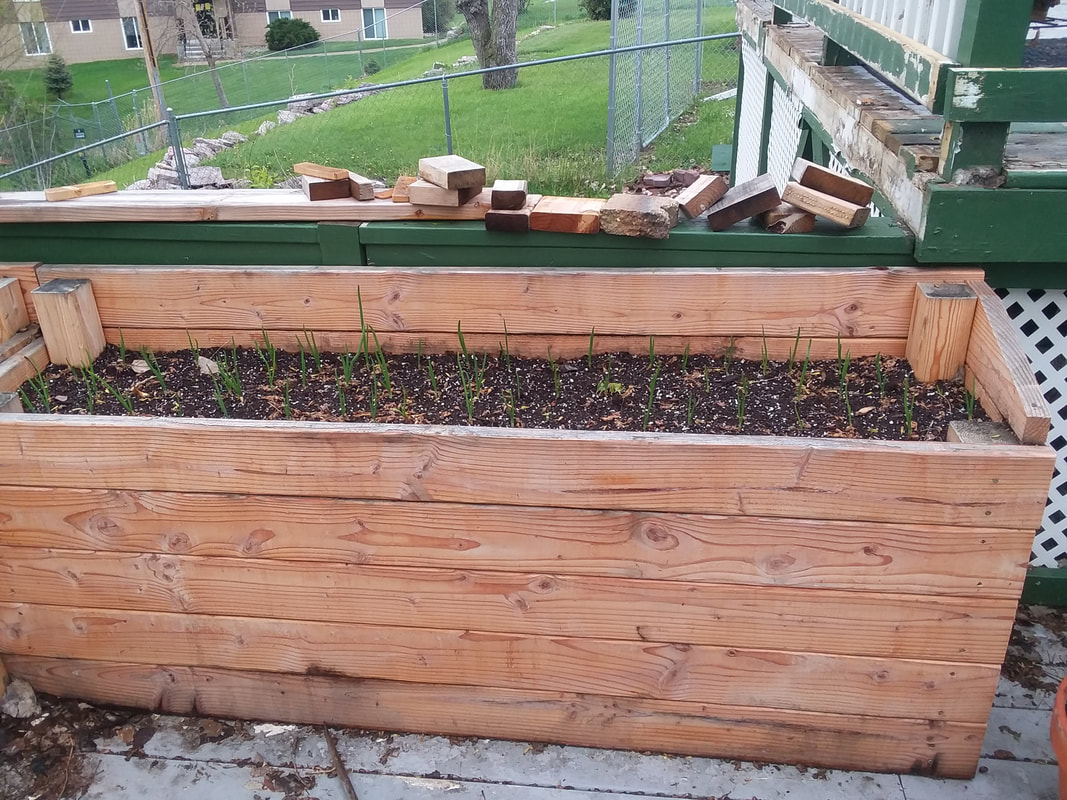
Planter Boxes
If you have the space and a good sunny location for them planter boxes are the way to go in my opinion. They will cost a bit of money and time to build and install but the benefits are worth it if you are serious about having a deck garden. Planter boxes are much better at holding water and providing larger spaces for plants to root into. This will result in stronger plants that need less frequent watering to establish and maintain good production. There are many shapes, styles and materials to build planter boxes out of treated/untreated lumber. Plastic panels, metal watering troughs, old fridges (seen it) pretty much anything you can think of using. I made mine from untreated lumber coated in many coats of raw linseed oil. What to plant You can plant anything you want in container gardens but there are things that will do better in a traditional garden. In my experience the following garden plants are good for pots,
If you have large planting boxes than maybe you can spread out into other crops like,
Watering You can go two ways with watering your container garden. You can water by hand every day or you can set up a timed irrigation system. Both systems have their pro’s and con’s. If you hand water it will most likely happen everyday even if it rains since rain typically can’t get enough water into the pots. It puts you out in your garden everyday which is great for monitoring plant growth and when it comes to harvesting but it does take time everyday. A timer controlled irrigation system is great for those of you with busy lives. It will water your plants automatically once it is set up and all you need to do is check it once a week to make sure it is still working right. This way has a lot more upfront cost and setup time but it is nice to be able to relegate watering duties to a timer. So now that you have my take on what you need to know to start a container garden it is time for you to give it a try yourself. The options and ways to do it are endless so you need to figure out what works best for your situation. If you have any questions about this, send me an email and I will help you out as quickly as I can. For more information on how to start a container garden check out some of my other articles here on the Green Living Library. Sources https://lancaster.unl.edu/hort/articles/2002/typeofpots.shtml Its been a rocky start so far with below average temperatures and lots of rain but the 2020 garden is officially in the ground and growing.
Hopefully it stays a bit drier than last year so I wont have as many powdery mildew issues. Below is a gallery of some of the pictures from the year so far. To kick off my series about growing your own food I am going to start with the way I am most familiar.
Growing a garden in an average urban back/front yard. Growing your own food on an urban lot comes with its challenges as well as benefits. You obviously lack space that you would get on a larger piece of land but what you gain is easy access to water and immediate proximity to your garden. This walkout your back door kind of access makes it really convenient to do everything. From planting and maintaining to harvesting your produce, having your garden just 10 steps from your door makes it really easy to garden. |
AuthorHello my name is Josh Larson and I am the creator of the Green Living Library. Here on the blog you will find updates to content found in the Green Living Library as well as stories from those living the sustainable life already. Archives
December 2021
Categories
All
|
